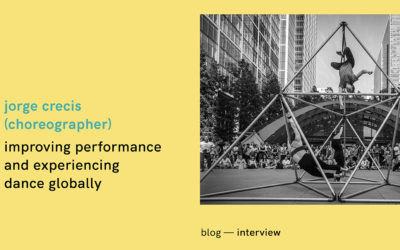“It’s always important for the composer or musician to understand the dynamic of the body, the meaning of a specific movement.” — Angelo Naso
Music composition and movement at the same time can be quite challenging, but it can give a rich final result, not only for the audience but also for the artists. We talked with Italian music composer Angelo Naso, who works between Rome and Granada, about the relationship between music and dance and his experience in creating compositions for contemporary dance performances.
You had experience in working as a music composer for dance pieces. Based on that, what is the main relationship between music and dance?
I believe that dance and music can be identical if we consider that both are created and developed through time. This is something that can inspire you as a composer – the movement through time. Music also moves through time and this connection between these two can result in a very synchronized music composition where dancers are moving within that rhythm, or it can result in a more conceptual piece where you don’t need to synchronise music and movement. In my experience in contemporary dance, the relationship between dance and music was more conceptual and I really liked that. I was receiving the idea of the performance, the creative process of creating the movement (while it was being created) and during that stage, I was thinking about an aesthetic that could fit on the performance’s idea. We were sharing the process from both sides, discussing ideas, so we were working together since the beginning to create something new at the same time.
What is more challenging: to compose the music while the choreographer is creating the piece or composing based on the full performance?
Everything can have amazing results. This is something that also happens with cinema – usually, the film is produced and then the composer creates the music. The soundtrack is the final part of the process. But there is one example of a good exception. In Christopher Nolan’s “Inception” it happened the opposite process. Music has actually inspired Nolan to get new ideas for the film, which makes you think about the possibilities of considering music as the basis of an artistic project or being a source of inspiration throughout the process. I think that having the composer since the beginning of a creative process can be very positive. It can open new paths, bring new ideas.
Do you think that musicians are aware enough of the dance field to collaborate in the creative process?
I think that musicians have a natural sense of movement because I feel that music also has movement and dynamics. That’s probably why music and dance have been together for such a long time in History. But it’s always important for the composer or musician to understand the dynamic of the body, the meaning of a specific movement. But also space where the performance will take place, how many people will be on stage, the lights… Everything is important to inspire music and to understand the field of dance.
What’s the main challenge of creating music for dance?
It’s always challenging. It depends a lot on the creative process of the choreography and its stage of development. If the choreography is already finished, music needs to adapt to the performance. On the other hand, music can inspire and change the movement. One of the greatest challenges that I find in dance is when the choreography has loads of changes in terms of movements and dynamics. This can look great in terms of movement, but it gets complicated for music… You can lose the melody, the unity of the sound. In general, adapting one art form to another is always challenging, but you always need to look for a balance, to adapt your work and to be even more critic in terms of what’s working or not.
What’s the most positive part of an equal creative process between music and dance?
I think there’s not only one positive aspect but many. But the most important one, for the artists, is that you can deepen your knowledge of other art forms and you can find new ways of expression that inspire you. For the audience, it makes the performance richer – it’s exciting to experience two energies combined to create something new and different. This interaction between different worlds makes the final product more complete.




0 Comments